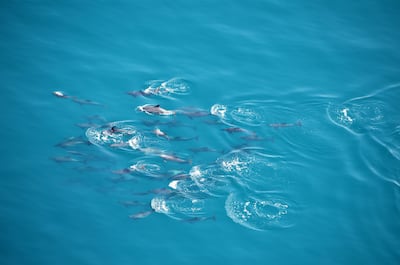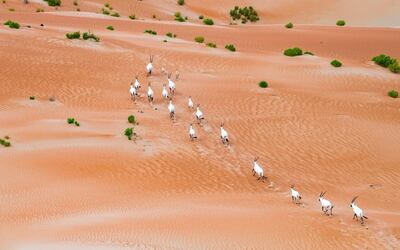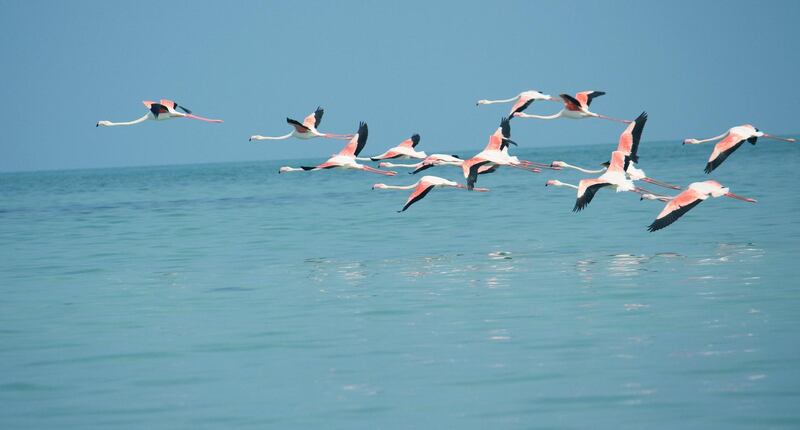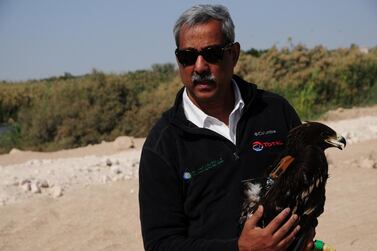A new book charting the milestones of Abu Dhabi’s environment agency has been released.
The book documents the agency's landmark projects, from breeding programmes that brought the Arabian Oryx back from the brink of extinction to regulations that protect dugongs, sea turtles and sharks.
The book, 25 Years of Preserving Sheikh Zayed's Environmental Legacy, traces the history of the agency, which began as the National Avian Research Centre in 1989.
The centre’s mission to preserve the art of falconry during a construction boom grew into a goal of preserving a healthy environment and ecosystem for raptors.
This developed into the Environmental Research and Wildlife Development Agency, founded in 1996.

Eventually, it became the Environment Agency Abu Dhabi.
In the beginning, it was a small group of ecologists dedicated to saving species like the houbara bustard from extinction, said Razan Al Mubarak, the agency’s managing director.
The agency has since grown into a steward of the sea, sand and skies of Abu Dhabi, and is responsible for protecting the emirate’s air quality, groundwater and biodiversity.
“Our humble beginnings were rooted in environmental research and discovery and this ethos remains the backbone of all that we have achieved over these past 25 years,” she wrote in the book’s foreword.
“If we can continue to inspire countless others, especially the younger generation to place sustainability at the heart of their lifestyle, we will all reap the rewards of a better, healthier environment, now and in the future.”

Abu Dhabi residents have inherited a responsibility as custodians of the land and seas, said Sheikh Hamdan bin Zayed, the agency’s chair.
"To prosper and develop, we seek a balance between the aspirations of our people and the needs of our planet,” he said in a statement. “It is through science and understanding that we strike such a balance. Through our scientific endeavours, we understand the challenges that face us and know how best to address them to ensure a lasting legacy for the future."
"We continuously strive to improve our stewardship of the bounty that we have inherited and the environmental legacy that we hand down to the next generation. We trust that our descendants will do even better than us in this regard. We meet these challenges with a positive outlook, vigour and innovation, turning every challenge into a new opportunity.
"As such, over the years, we have spared no effort in improving our understanding of the environment, and in educating our youth on the importance of conserving the wealth of our resources.
"We have a much better understanding of our air, water, soil, habitats, and species; empowering us to become more effective stewards of the future."
Successful conservation measures were highlighted in the agency's latest environmental annual report published in May.
The report revealed the emirate had achieved record populations of both Arabian Oryx and two threatened species of sea mammals.
On land, Abu Dhabi now hosts 5,000 Arabian Oryx, the largest herd in the world of a species that was once wiped out in the wild by hunting.
Conservation measures began in the 1980s by Sheikh Zayed, with the founding of Al Ain Zoo.
The waters of Abu Dhabi also contain the world’s largest number of Indian Ocean humpback dolphins, with the agency also monitoring more than 3,000 dugong, again more than anywhere else on the planet.
The 140-page book is published in Arabic and English.






